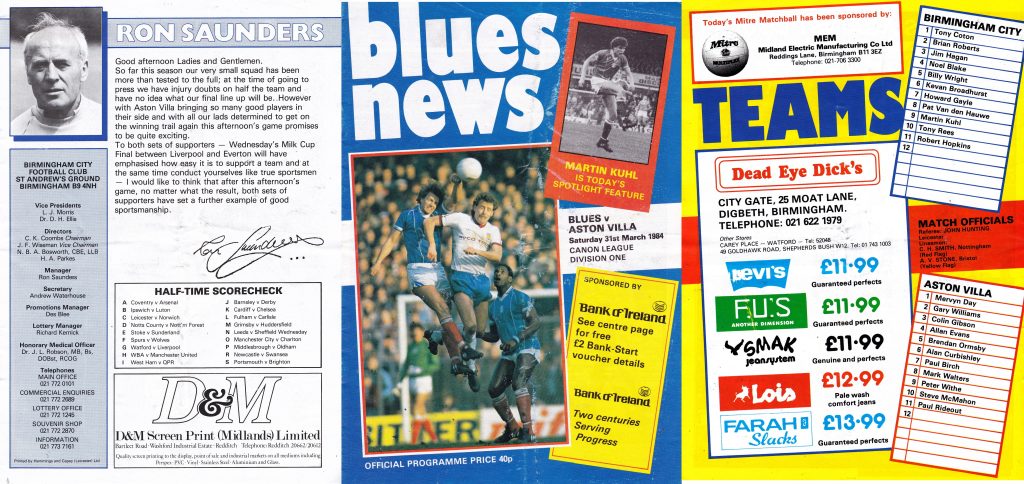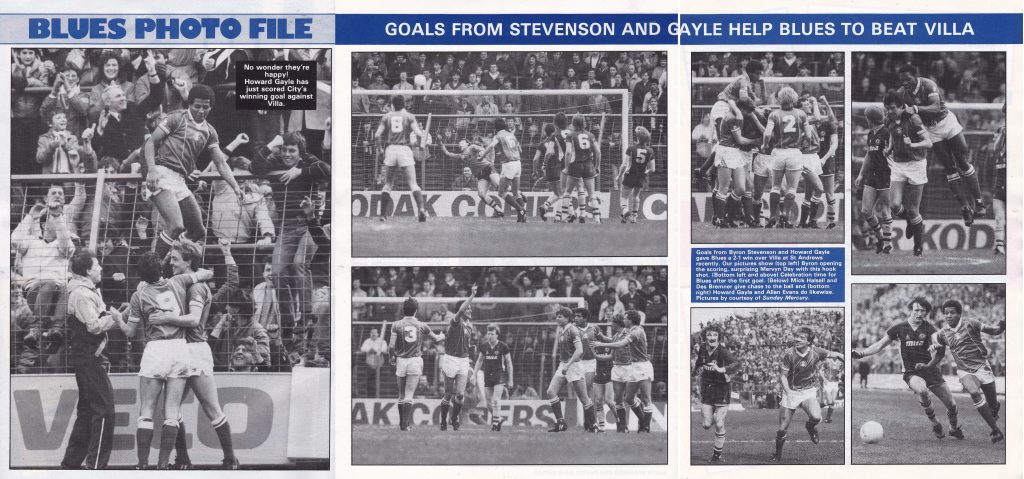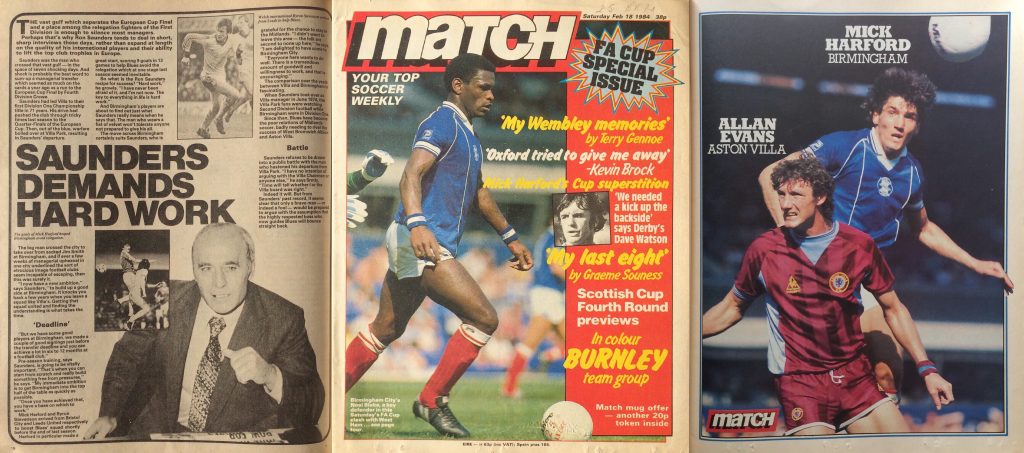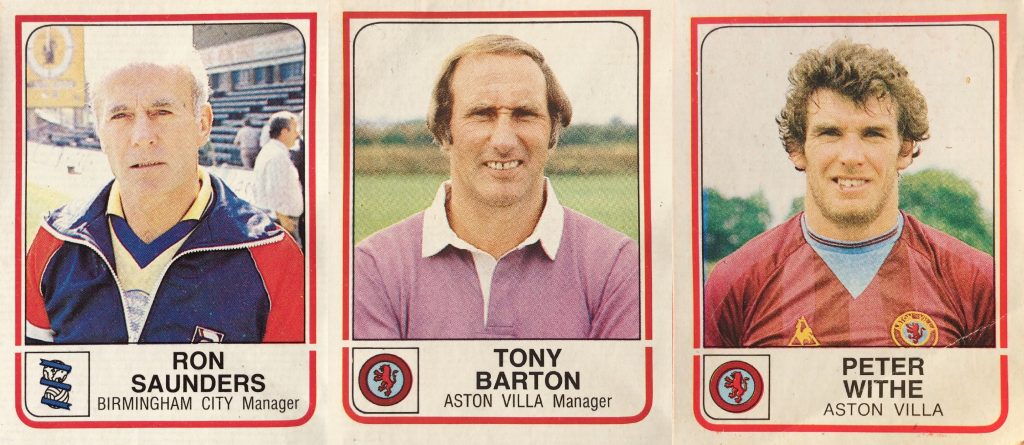Birmingham City v Aston Villa, 1984
Birmingham City welcomed neighbours Aston Villa to St Andrew’s at the end of March 1984 with manager Ron Saunders the central figure. Villa’s league form had been in decline since winning the title under Saunders in 1980/81, their first league championship for 71 years (and their last to date). However after Saunders’ dramatic departure in February 1982, his replacement and former assistant Tony Barton took them to European Cup victory against Bayern Munich.

Saunders took over at Birmingham before the end of the 1981/82 season, while Barton remained in charge at Villa for this fixture. Eliminated from the UEFA Cup by Spartak Moscow in the 2nd Round, Villa reached the League Cup semi-finals but after a 10th place finish, Barton was replaced at the end of this season by Graham Turner.
The Birmingham team contained two former Villa players in Noel Blake and Robert Hopkins, while Alan Curbishley had moved in the opposite direction. The scorer of Villa’s European Cup-winning goal, Peter Withe, had an earlier spell at Birmingham. Saunders was later to bring Des Bremner to St Andrew’s, with Villa captain Dennis Mortimer following after a stay at Brighton. When Saunders later moved to West Brom he brought two more of his successful Villa side, Ken McNaught and Tony Morley, with him.
Match details for Birmingham City – Aston Villa; St Andrew’s, Football League Division One, Saturday 31 March 1984:
Birmingham City: 1. Tony Coton, 2. Brian Roberts, 3. Jim Hagan, 4. Noel Blake, 5. Martin Kuhl, 6. Byron Stevenson, 7. Howard Gayle, 8. Pat Van Den Hauwe, 9. Mark McCarrick, 10. Mick Halsall, 11. Robert Hopkins. Manager: Ron Saunders. Scorers: Stevenson, Gayle
Aston Villa: 1. Mervyn Day, 2. Gary Williams, 3. Colin Gibson (sub. Des Bremner), 4. Allan Evans, 5. Brendon Ormsby, 6. Alan Curbishley, 7. Paul Birch, 8. Mark Walters, 9. Peter Withe, 10. Steve McMahon, 11. Paul Rideout. Manager: Tony Barton. Scorer: Withe
Attendance: 23,993

As the club of the league’s founding father William McGregor, Aston Villa were among the Football League’s original clubs in 1888. With membership initially limited to one club per city, there was no room for their neighbours. Only in 1892 were Small Heath admitted to the newly-formed Second Division, having previously played in the rival Football Alliance. The first league meeting between the two took place at Villa Park on 1 September 1894 in the First Division. September 1905 saw the first derby played as Birmingham (City was not added to the name until 1943), and a year later St. Andrew’s was opened. After March 1986, there was a sixteen-year gap before the sides met again in England’s top division (by which time it was the Premier League).
Birmingham had been back in the top flight since 1980 but this proved to be their last win of the 1983/84 season, lifting them to 12th position before slumping to relegation in 20th place. They had reached the FA Cup quarter-final, beaten at St Andrew’s by Watford. Birmingham were promoted straight back in 1984/85 under Saunders, only to be relegated again in 1985/86 and not return to the top division until 2002.

Saunders had been in charge since 1974, but Villa struggled to recapture the consistency which brought them the league title and the players who went on to win the European Cup gradually left the club. The decline culminated in relegation to the Second Division in 1987 (where they met their neighbours once more), but Graham Taylor guided them back to the top division. Villa were league runners-up in 1989/90 and again in 1992/93, coming close to winning the inaugural Premier League title under Ron Atkinson.
Match programme images courtesy of Miles McClagan (Flickr & twitter @TheSkyStrikers).

The fluctuating fortunes of Football League clubs in the 1980s is one of the topics discussed in my book Before the Premier League: A History of the Football League’s Last Decades.